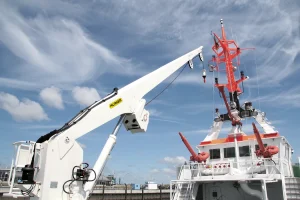Triple trailers, also known as “road trains” in some regions, consist of a tractor pulling three trailers. These combinations are subject to stringent regulations due to their size, weight, and the potential for increased accident risk. Not all states allow these vehicles on their roads, with laws varying based on safety assessments, infrastructure capabilities, and traffic conditions.
States Where Triple Trailers Are Allowed
The legality of triple trailers is not uniform across the country. Specific states permit their operation under certain conditions, often restricted to designated highways or requiring special permits. Here’s a closer look at where semi triple trailers are allowed and under what circumstances.
Western States
- Nevada and Utah are known for more lenient regulations regarding triple trailers, allowing them on most of their interstate highways. These states have wide-open spaces and straight routes, which are considered safer for longer combination vehicles (LCVs).
- Idaho and Montana also permit triple trailers but with more specific restrictions related to routes and times of operation, aiming to minimize traffic disruptions and enhance safety.
Midwest States
- Ohio allows triple trailers on specific segments of the interstate highway system. Operators must obtain proper permits and adhere to vehicle size and weight limits.
- Indiana and Illinois have designated routes where triple trailers can operate, primarily on major highways away from densely populated areas.
Conditions and Restrictions
States allowing the operation of semi triple trailers typically impose conditions to ensure safety and minimize the impact on infrastructure. These conditions include:
- Vehicle Length: There’s a maximum length limit, which usually ranges from 95 to 105 feet.
- Weight Restrictions: Weight limits are strictly enforced to prevent road damage and maintain safe handling of the vehicle.
- Permits: Operators might need to obtain special permits, which can include route restrictions and time-of-day travel limitations.

Advantages and Challenges
Operating semi triple trailers offers several advantages, including reduced transportation costs, lower fuel consumption per ton-mile, and decreased greenhouse gas emissions due to efficiency improvements. However, the challenges include higher initial setup costs, increased maintenance expenses, and the need for drivers with specialized skills to safely operate these longer and heavier vehicles.
- Efficiency: Transporting goods with triple trailers can significantly increase efficiency, reducing the number of trips required for the same cargo volume.
- Costs: The initial investment for a semi triple trailer and the associated equipment can be substantial, but these costs are often offset by long-term savings in fuel and labor.
In summary, while triple trailers offer considerable benefits in terms of efficiency and cost-effectiveness, their operation is limited to states that can safely accommodate their size and weight. For detailed specifications and further information on semi triple trailers, consider visiting Sunhunk HCV. Always ensure compliance with local regulations and obtain the necessary permits before operating a triple trailer configuration.